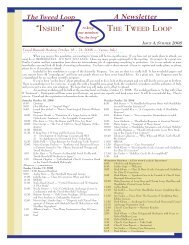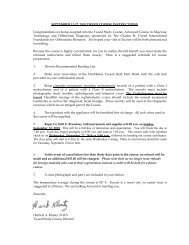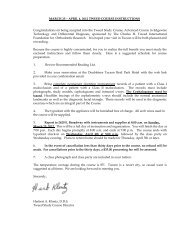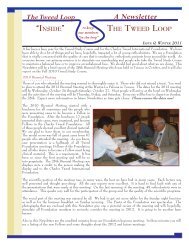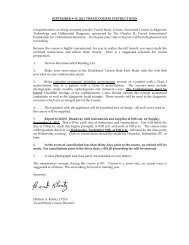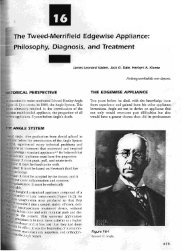© 2006 - The Charles H. Tweed International Foundation
© 2006 - The Charles H. Tweed International Foundation
© 2006 - The Charles H. Tweed International Foundation
You also want an ePaper? Increase the reach of your titles
YUMPU automatically turns print PDFs into web optimized ePapers that Google loves.
Fig. 6. Pretreatment and posttreatment dental castsIf this is not done, some significantproblems will occur. <strong>The</strong>re aretimes when this approach won’twork. <strong>The</strong> patient might be startedwithout removing teeth, but itsimply doesn’t work. <strong>The</strong>re isnot enough space or the properforce system is not applied. <strong>The</strong>dentition flares forward. Figures10-20 (Lindsey Gallaher) showthe records of a patient whosetreatment was started withoutpremolar extraction, but whosedentition flared forward off basalbone. Secondpremolars wereextracted andthe patient wastreated.Fig. 7. Posttreatment cephalometricradiographFig. 8. Posttreatment cephalometric tracing<strong>The</strong>diagnosis ofthese“borderline”patients and thetreatment planwhich followsmust becarefullyFig. 9. Superimpostion -Bradythought out priorto starting treatment. It is alsoessential that proper forces be appliedto the dentition at the proper time. Ina sense, these patients are much moredifficult to treat because very carefulattention to detail and to preservation oftooth position must be utilized duringthe course of treatment.Fig. 10. Pretreatment facial photographsFig. 11. Pretreatment cephalometric radiograph and tracing32



